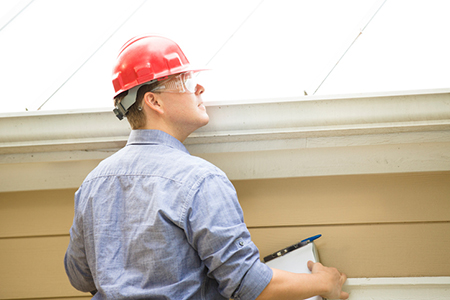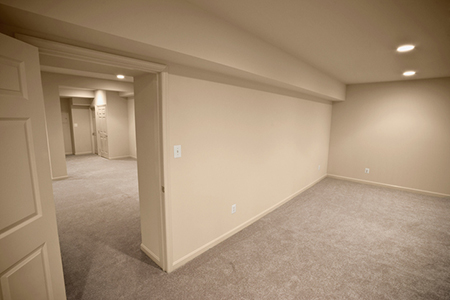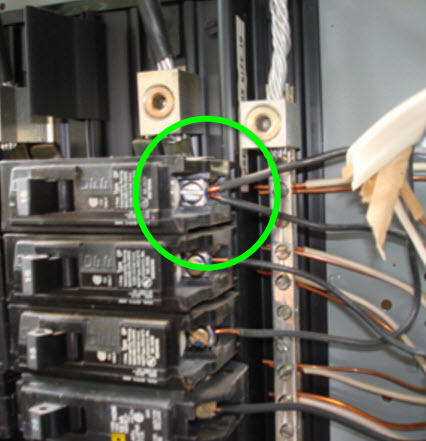Who Is Responsible When Your Tree Falls?
 A few years ago, some of us had ever heard of a "Derecho"; now, faced with fallen trees, damaged property and even a few deaths, Derecho - meaning super-strong windstorm - is a household word. One we really never want to hear -or see - again.
A few years ago, some of us had ever heard of a "Derecho"; now, faced with fallen trees, damaged property and even a few deaths, Derecho - meaning super-strong windstorm - is a household word. One we really never want to hear -or see - again.
Who is responsible if your neighbor’s tree falls on your property? The general rule is that unless the neighbor knew - or should have known - that his tree was unsafe - even if it caused damage to person or your property, he is not responsible. Our courts follow the old common law: it’s your property, so take care of it, unless you can prove your neighbor was negligent.
The legal answer to this is quite simple; however, the interpretation and implementation of the law is rather complex.
How do you prove that your neighbor’s tree was unsafe and that your neighbor was negligent in not assuring that the tree would not fall? What constitutes negligence?
The answer depends on all of the facts. Did your neighbor have any knowledge that the tree was a potential hazard? Should the tree owner have been on notice of a problem because the tree was not showing leaves but only bare limbs?
Did you complain about the safety of the tree, and yet he took no action?
Here we have to look to specific cases. Take the leading case in the District of Columbia (Dudley v Meadowbrook, 1961). The Defendant’s tree fell onto the Plaintiff’s property, and damaged a garage. The evidence indicated that there was no strong wind blowing when the tree fell. The Court wrote that "a healthy tree does not ordinarily fall of its own weight without some exterior force being directed against it. Though some evidence indicated that the tree looked sound, it was in fact full of decay. At least 13 years earlier it had been subjected to surgery and a large area filled with concrete."
In conclusion, the Court suggested that a land owner has a duty to periodically inspect the trees on his property or at least have them examined by an expert to determine whether they are safe to continue to stand.
In order for negligence to be found, the Plaintiff (the injured neighbor) would have to file suit against the tree owner. Most cases are not clear cut; they require extensive background research, expert testimony and a potentially lengthy trial. This is both time consuming and expensive for a Plaintiff. And it should be pointed out that our legal system has adopted what is known as the "American Rule of Legal Fees". In the absence of a written contract or a statute authorizing attorneys fees, each side pays their own attorneys fees.
And even if a lawsuit is brought, the tree owner can raise the defense that an "Act of God" (or in this case an Act of Derecho) caused the tree damage. If the tree owner was on notice before the storm that the tree was likely to fall down, this defense may not be accepted by a Court of Law. But it nevertheless is a legal defense which every defendant will raise when sued.
There is yet another defense, namely "contributory negligence". The general rule throughout the United States is that if a tree limb or a tree root protrudes on a neighbor’s property, that neighbor has the right to exercise self-help -- i.e. the offending root or limb can be cut off.
Some Court cases have determined that the tree owner was not liable, since the neighbor -- who knew that the tree was dangerous -- did not exercise this self-help. In other words, the neighbor’s own negligence defeated his claim against the tree owner.
What if your tree falls on a public roadway? According to a recent Supreme Court case in Virginia, a landowner does not have a duty to inspect and cut down sickly trees that have the possibility of falling on a public roadway and inflicting injury. This is the duty of the local government to periodically inspect to assure the safety of the public. This is also the law in the District of Columbia, where the high court here made it clear that government must exercise reasonable care in the maintenance of well traveled thoroughfares.
What is the role of your insurance policy? Homeowners should carefully review their Home owner’s insurance policy -- often called the "hazard policy". Many policies are now written in relatively simple English, so you should be able to understand what position your insurance carrier will take should you decide to file a claim. In most cases, your carrier will reimburse you for any damage caused to your property when a tree falls, subject of course to the level of your deductible. If, however , no damage resulted, there will be no insurance coverage and you have to bear the cost to remove the tree.
And according to Robin Manougian, an insurance agent in Silver Spring, Maryland, "should a live tree be struck by lightening - which is a covered peril in the policy - the insurance would pay for the tree up to the policy dollar limits, but generally not for the removal of the tree."
But, do you really want to file a claim against your insurance policy?
We have all heard stories that the carrier -- when faced with a claim -- will either significantly increase the next years premium or decide not to renew the policy.
Thus, if your damage is minimal, give serious thought to picking up the cost yourself. Let’s say you have $4000 in damage and your deductible is $2,000. If you file a claim, and you can produce proper evidence that the repair cost is really $4000, you will receive $2,000 from your carrier. But is this money worth facing possible non-renewal (or an increased insurance premium) next year?
If there is damage to your property, talk with your insurance agent, but make sure that he/she understands you are only seeking information and advice -- and are not yet ready to formally file your claim.
There is a long -- often convoluted and contradictory -- legal history relating to the development of "tree law". Our legal system is predicated on what we refer to as the "Common Law" -- the laws which came over from England before the founding of our nation. Under the common law, the land owner owed no duty to those outside his property to correct natural conditions on the property -- even though those conditions might present a hazard to outsiders. My home was my castle and I was master of that property.
But as our nation grew from a rural to an urban environment, this common law rule began to lose its impact. Houses were next door to each other, and homeowners had to be concerned about injuring or damaging their neighbor -- or their neighbor’s property.
Accordingly, Judges faced with such tree-falling cases began to carve out exceptions to the common law. Some Courts held that a falling tree was a trespass; others held that such a tree was a nuisance. Both theories evolved into the current rule of law, namely that the tree owner is only responsible if that owner was negligent. I had a neighbors tree fall on a tenants car on our property and also took out a privacy fence. The tree was rotten which was even more evident after falling and examining the rotten hollow break. I call the neighbors property manager and they came over and removed the tree and fixed the fence. The tenant had to fend for themselves with their car insurance and I believe asked the neighbor to pay their comp. deductible, though there might have been some question whether the neighbor was legally responsible.
The clear moral to this legal history is that litigation may not be the best approach. If your neighbor’s tree falls onto your property -- whether or not it causes damage -- you should talk to your neighbor and propose that you share in the cost of removal and repair. Clearly, this is probably the least expensive way to resolve your issues, and you also can avoid filing that claim against your insurance carrier.
How do tree owners protect themselves to avoid the allegation of negligence? One safe harbor is to have your trees periodically inspected by a certified arborist, and get a written report stating that the trees are healthy.
Tom Stachler is a licensed Broker & Builder plus marketing expert for commercial, condo and homes in the Ann Arbor Michigan community and surrounding areas such as Dexter, Saline, Chelsea, Milan Ypsilanti and Pinckney real estate markets. Note the Search Properties link above to view a complete Inventory of homes and condos for sale. Also click on the resources tab above for other helpful information Links, contractor discounts and sources. Have questions want sell your home or get a price ? Go to www.MyPrice.guru to get started and see comparable home sales. Or maybe you want to search for property and view an updated MLS inventory report created for those Buying properties . Hit the contact me link to the right or call us with any questions because we would love to hear from you. We also have a Contractor Discount page here on our website or many helpful Links in the tab above for more resources.
Ann Arbor Real Estate for Sale, Saline Real estate for sale, whatever the need in the surrounding areas, we have it using the navigation tabs above.


 If you have an aging, oil-fired heating system and are dreading the day you’ll need to
If you have an aging, oil-fired heating system and are dreading the day you’ll need to 

 A few years ago, some of us had ever heard of a "Derecho"; now, faced with fallen trees, damaged property and even a few deaths, Derecho - meaning super-strong windstorm - is a household word. One we really never want to hear -or see - again.
A few years ago, some of us had ever heard of a "Derecho"; now, faced with fallen trees, damaged property and even a few deaths, Derecho - meaning super-strong windstorm - is a household word. One we really never want to hear -or see - again. Storage Unit Options in Ann Arbor and Saline Michigan Areas : Whether you’re in the process of downsizing or simply looking to open up your
Storage Unit Options in Ann Arbor and Saline Michigan Areas : Whether you’re in the process of downsizing or simply looking to open up your 





